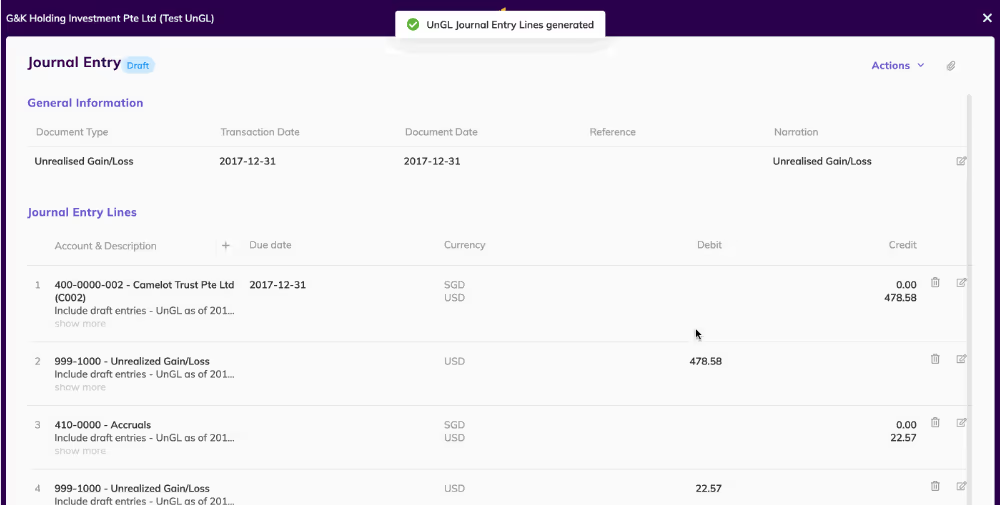Journal Entry Definition
What is a journal entry in accounting? Learn how journal entries work, their structure, and see a practical example of a journal entry with debits and credits.
What is a Journal Entry?
In accounting, a journal entry is a formal record of a financial transaction in your accounting system.
Each journal entry applies the double-entry principle, meaning that every transaction has at least one debit and one credit, keeping the accounting equation in balance.
Each entry should contain the date of the transaction, the accounts affected, the debit and credit amounts, and a short description.
The goal of these entries is to create the chronological foundation of the company’s books before posting to the general ledger, offering accurate recording of each business transaction.

How to Structure a Journal Entry
Creating your journal entry can be done in 5 simple steps.
- Step 1 → Define the document type. For example, vendor invoice.
- Step 2 → Add accurate transaction and document dates.
- Step 3 → In narration, define what the journal entry represents. For example, if the payment represents a standard bookkeeping fee, for which client, and when.
- Step 4 → Select all accounts that will be impacted
- Step 5 → Include debit and credit amounts. When relevant, also include currencies.
If you’re wondering how to create a journal entry on Eleven, check out this video.
With Eleven you can also edit entries from your general ledger, delete them, or create entries in multi-currencies.
Journal Entry Example
A company purchases office equipment for €5,000, paid in cash:
This journal entry records the increase in assets (equipment) and the decrease in cash, while keeping debits and credits equal.
Why Are Journal Entries Important?
Journal entries provide transparency and accuracy in accounting records.
They form the first step in producing financial statements and are essential for audits, reconciliations, and internal controls.
In modern ERP systems, journal entries are often automated, but the underlying logic remains unchanged.
A journal entry translates every financial event into accounting language, ensuring completeness, balance, and auditability.




